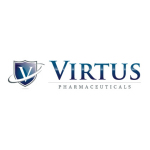madman
Super Moderator
Hormonal Approach for Postmenopausal Vulvovaginal Atrophy (2022)
Ana Paula Ferreira Costa, Ayane Cristine Alves Sarmento, Pedro Vieira-Baptisa, José Eleutério Jr., Ricardo Ney Cobucci and Ana Katherine Gonçalves
Menopause is a physiological and progressive phenomenon secondary to decreased ovarian follicular reserve that significantly affects the genital tract. Although postmenopausal vulvovaginal atrophy primarily affects postmenopausal women, it is also seen in premenopausal women. The hypoestrogenic condition results in hormonal and anatomical changes, with the main symptoms, being dryness, burning, genital irritation, decreased lubrication, urinary urgency, dysuria, and recurrent urinary tract infections. This review aims to update hormone therapy for urogenital atrophy, both local and systemic, and discusses the importance of understanding and the need for active treatment of this condition. The main therapeutic objective is the relief of symptoms, and hormonal therapy (HT) is still the most effective choice for treating clinical manifestations, despite the side effects of its use. HT should be used in an individualized way to the needs of the woman and appropriate to the stage in which she is menopausal, perimenopausal, or after menopause.
INTRODUCTION
Menopause is a gradual and physiological event due to ovarian failure and consequent hypoestrogenism, which significantly affects the lower genital tract. Several denominations are used to describe the alterations noticed in the lower genital tract, such as atrophic vaginitis, vulvovaginal atrophy (VVA), and, lately, genitourinary syndrome of menopause (GSM) (1–3).
Vulvovaginal atrophy of any degree is present in 15% of premenopausal women and in 40– 54% of postmenopausal women (4, 5). Women may experience some or all signs and symptoms (vaginal dryness, dyspareunia, sensations of discomfort, burning and irritation, vulvovaginal pruritus, dysuria, and increased frequency of genitourinary infections). The condition is often underdiagnosed due to sexual embarrassment or general disregard associated with it as a liability of natural aging, especially if the symptoms are mild (4, 5).
The main therapeutic objective is the relief of symptoms. Local (vaginal) hormones are the most used option to fulfill this objective. They promote the renovation of the epithelium and vaginal flora, and improvement of the urogenital and sexual complaints (3, 5).
Several hormonal treatment options are currently available, including systemic hormonal therapies (oral and transdermal), low-dose vaginal estrogen, prasterona therapies (2, 3, 5), and Selective Estrogen Receptor Modulators (SERMs) as Ospemifene. This article aims to contribute to knowledge about subjective and objective measurements available for assessing vulvar, vaginal, and lower urinary tract atrophy, as well as future possibilities; so, hormonal treatment options have been available over the years for this syndrome.
*SYSTEMIC
*PROGESTERONE
*TESTOSTERONE
*LOCAL (VAGINAL)
INTRAVAGINAL
DEHYDROEPIANDROSTERONE (DHEA)
TESTOSTERONE
*SYNTHETIC STEROIDS AND OXYTOCIN
CONCLUSION
Hormonal therapy must be individualized to the needs of women and is conditioned by the stages of menopause. Low-dose vaginal estrogens, vaginal DHEA, and systemic estrogen therapy are effective for moderate to severe GSM. Treatment by administering hormone systemic, in particular, is commonly used to combat vasomotor symptoms, preserve bone mass, improve sleep, prevent the deterioration of cognitive function, and stimulate libido. The vaginal formulations promote the renovation of the epithelium and vaginal flora and improve urogenital and sexual complaints, decreasing vaginal dryness. Tibolone is another option used to relieve vasomotor symptoms and improve vaginal atrophy, changing the VMI and increasing the sex drive through its androgenic properties. Oxytocin has been evaluated as an alternative due to concerns about the use of estrogen therapy. However, other research is necessary for confirmation of these results.
Ana Paula Ferreira Costa, Ayane Cristine Alves Sarmento, Pedro Vieira-Baptisa, José Eleutério Jr., Ricardo Ney Cobucci and Ana Katherine Gonçalves
Menopause is a physiological and progressive phenomenon secondary to decreased ovarian follicular reserve that significantly affects the genital tract. Although postmenopausal vulvovaginal atrophy primarily affects postmenopausal women, it is also seen in premenopausal women. The hypoestrogenic condition results in hormonal and anatomical changes, with the main symptoms, being dryness, burning, genital irritation, decreased lubrication, urinary urgency, dysuria, and recurrent urinary tract infections. This review aims to update hormone therapy for urogenital atrophy, both local and systemic, and discusses the importance of understanding and the need for active treatment of this condition. The main therapeutic objective is the relief of symptoms, and hormonal therapy (HT) is still the most effective choice for treating clinical manifestations, despite the side effects of its use. HT should be used in an individualized way to the needs of the woman and appropriate to the stage in which she is menopausal, perimenopausal, or after menopause.
INTRODUCTION
Menopause is a gradual and physiological event due to ovarian failure and consequent hypoestrogenism, which significantly affects the lower genital tract. Several denominations are used to describe the alterations noticed in the lower genital tract, such as atrophic vaginitis, vulvovaginal atrophy (VVA), and, lately, genitourinary syndrome of menopause (GSM) (1–3).
Vulvovaginal atrophy of any degree is present in 15% of premenopausal women and in 40– 54% of postmenopausal women (4, 5). Women may experience some or all signs and symptoms (vaginal dryness, dyspareunia, sensations of discomfort, burning and irritation, vulvovaginal pruritus, dysuria, and increased frequency of genitourinary infections). The condition is often underdiagnosed due to sexual embarrassment or general disregard associated with it as a liability of natural aging, especially if the symptoms are mild (4, 5).
The main therapeutic objective is the relief of symptoms. Local (vaginal) hormones are the most used option to fulfill this objective. They promote the renovation of the epithelium and vaginal flora, and improvement of the urogenital and sexual complaints (3, 5).
Several hormonal treatment options are currently available, including systemic hormonal therapies (oral and transdermal), low-dose vaginal estrogen, prasterona therapies (2, 3, 5), and Selective Estrogen Receptor Modulators (SERMs) as Ospemifene. This article aims to contribute to knowledge about subjective and objective measurements available for assessing vulvar, vaginal, and lower urinary tract atrophy, as well as future possibilities; so, hormonal treatment options have been available over the years for this syndrome.
*SYSTEMIC
*PROGESTERONE
*TESTOSTERONE
*LOCAL (VAGINAL)
INTRAVAGINAL
DEHYDROEPIANDROSTERONE (DHEA)
TESTOSTERONE
*SYNTHETIC STEROIDS AND OXYTOCIN
CONCLUSION
Hormonal therapy must be individualized to the needs of women and is conditioned by the stages of menopause. Low-dose vaginal estrogens, vaginal DHEA, and systemic estrogen therapy are effective for moderate to severe GSM. Treatment by administering hormone systemic, in particular, is commonly used to combat vasomotor symptoms, preserve bone mass, improve sleep, prevent the deterioration of cognitive function, and stimulate libido. The vaginal formulations promote the renovation of the epithelium and vaginal flora and improve urogenital and sexual complaints, decreasing vaginal dryness. Tibolone is another option used to relieve vasomotor symptoms and improve vaginal atrophy, changing the VMI and increasing the sex drive through its androgenic properties. Oxytocin has been evaluated as an alternative due to concerns about the use of estrogen therapy. However, other research is necessary for confirmation of these results.



















